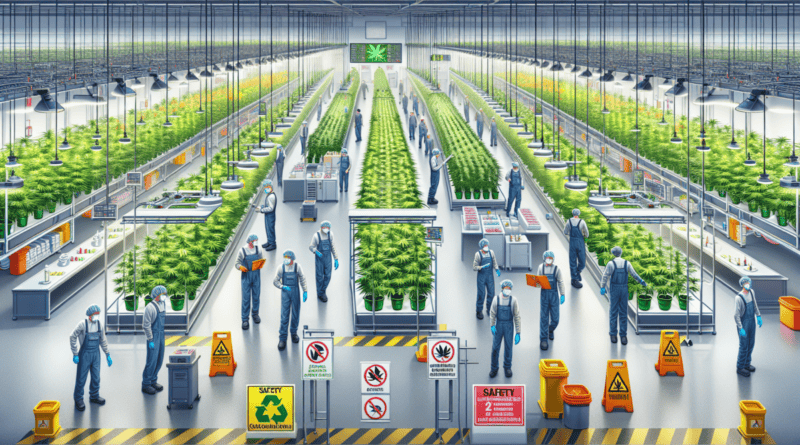Addressing Workplace Safety Concerns in Cannabis Cultivation
As the cannabis industry continues to experience exponential growth, ensuring the safety of workers in cannabis cultivation facilities has become a crucial concern. Given the unique challenges associated with cultivating cannabis, it is imperative for both employers and employees to be aware of potential hazards and the necessary precautions to mitigate them. This article delves into the various workplace safety concerns in cannabis cultivation and provides strategies for addressing them effectively.
Chemical and Pesticide Exposure
Cannabis cultivation often requires the use of various chemicals, including pesticides, fertilizers, and growth enhancers. These substances, while beneficial to plant health and yield, can pose significant health risks to workers if not handled properly. Exposure to such chemicals can lead to respiratory issues, skin irritation, and even long-term health problems.
To minimize the risks associated with chemical and pesticide exposure, it is essential to:
- Provide comprehensive training on the safe handling and application of chemicals.
- Ensure the availability and use of personal protective equipment (PPE) such as gloves, masks, and protective clothing.
- Implement rigorous protocols for chemical storage and disposal.
- Conduct regular health monitoring of employees to detect any early signs of exposure-related ailments.
Air Quality and Ventilation
Maintaining good air quality is crucial in cannabis cultivation facilities, as poor ventilation can lead to the accumulation of harmful substances, including mold spores and volatile organic compounds (VOCs). These can contribute to respiratory problems and other health issues for workers.
To address air quality and ventilation concerns, cultivation facilities should:
- Install appropriate ventilation systems to ensure adequate airflow and the removal of contaminants.
- Regularly monitor air quality and address any issues promptly.
- Use air purifiers and dehumidifiers to maintain optimal environmental conditions.
- Provide training on proper ventilation practices and the importance of maintaining a clean working environment.
Ergonomic Hazards
Workers in cannabis cultivation often engage in repetitive tasks such as planting, pruning, and harvesting. These activities can lead to ergonomic-related injuries, including strains, sprains, and repetitive strain injuries (RSIs).
To reduce ergonomic hazards:
- Encourage regular breaks and task rotation to minimize repetitive strain.
- Provide ergonomic tools and equipment designed to reduce the physical strain on workers.
- Conduct training sessions on proper lifting techniques and body mechanics.
- Design workspaces to promote good posture and reduce the risk of injury.
Fire Hazards
The combination of electrical equipment, lighting, and drying processes in cannabis cultivation facilities can create a significant fire hazard. Additionally, the presence of flammable materials such as fertilizers and chemicals increases the risk of fire.
To mitigate fire hazards:
- Install and maintain fire detection and suppression systems.
- Ensure that all electrical systems are up to code and regularly inspected.
- Store flammable materials in designated, secure areas away from ignition sources.
- Provide fire safety training and conduct regular fire drills.
Biological Hazards
Cannabis cultivation can expose workers to various biological hazards, including mold, bacteria, and plant allergens. These hazards can lead to respiratory issues, infections, and allergic reactions.
To address biological hazards:
- Implement strict hygiene protocols, including regular handwashing and sanitation practices.
- Ensure the use of appropriate PPE such as gloves and masks.
- Maintain clean and well-ventilated workspaces to prevent the growth and spread of biological contaminants.
- Provide training on recognizing and responding to biological hazards.
Conclusion
Addressing workplace safety concerns in cannabis cultivation requires a proactive and comprehensive approach. By implementing proper safety protocols, providing thorough training, and fostering a culture of safety, employers can protect their workers from the unique hazards associated with this rapidly growing industry. Ensuring the well-being of employees not only enhances productivity but also contributes to the overall sustainability and success of cannabis cultivation operations.

